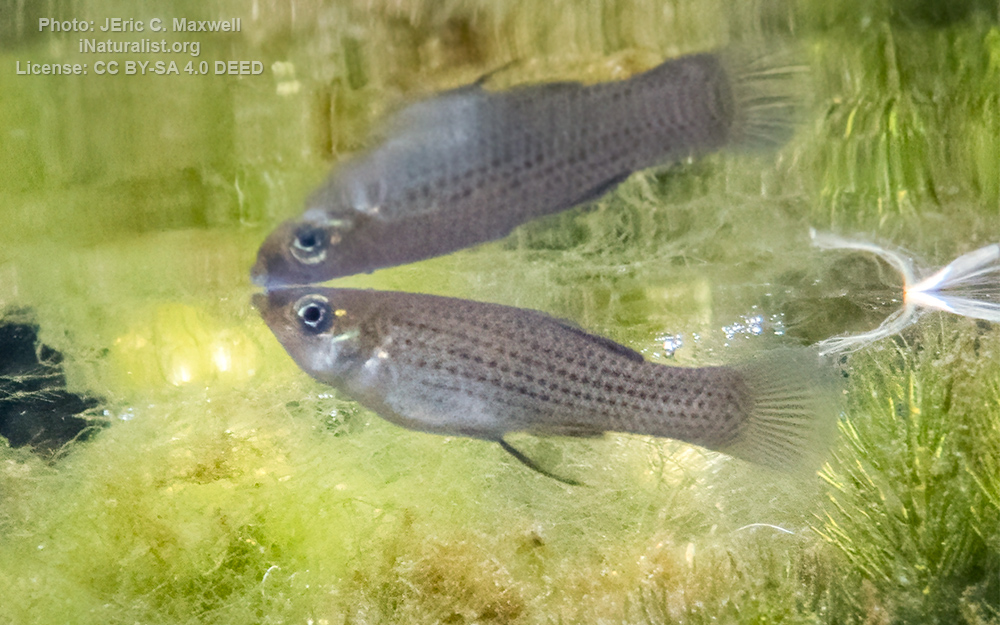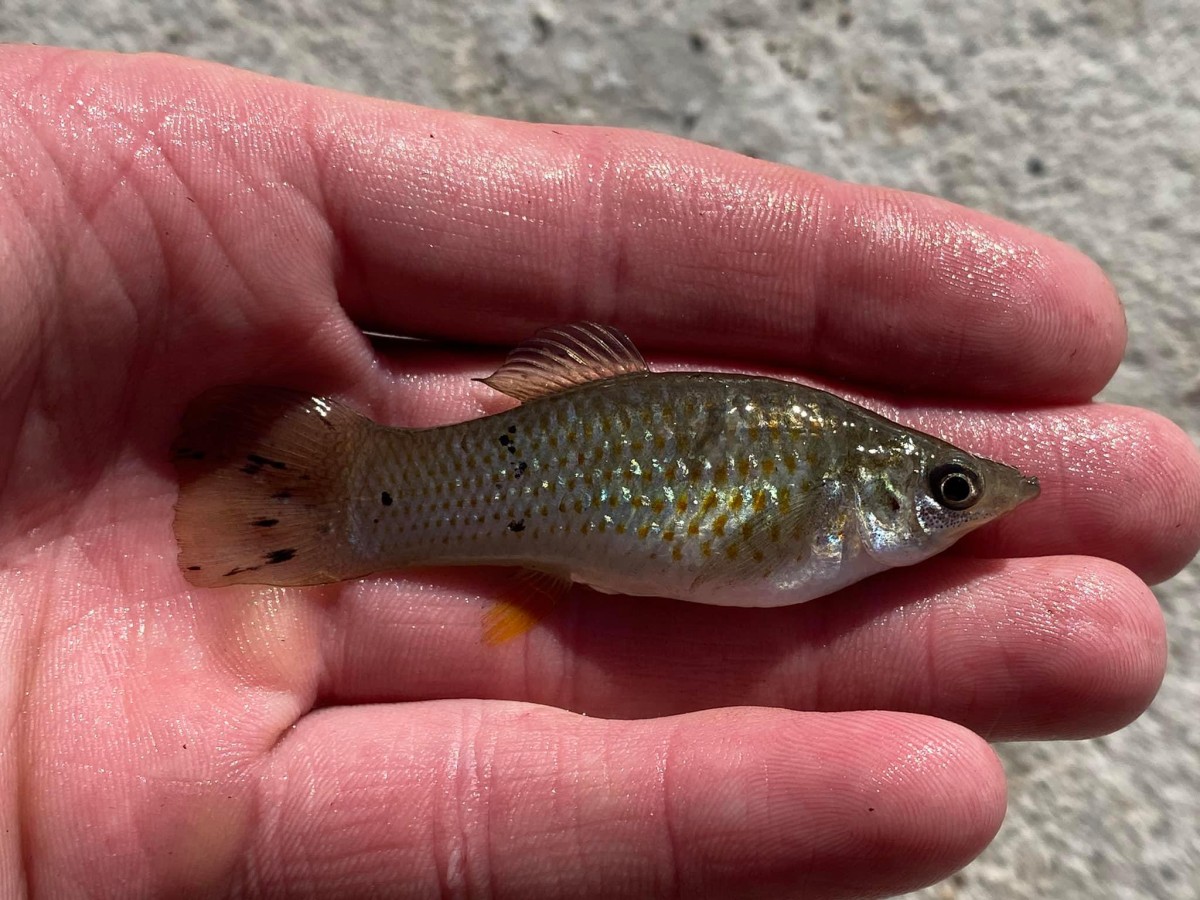Sailfin molly
(Poecilia latipinna)

Classification
General data
The sailfin molly (Poecilia latipinna) is a livebearer fish typically found in both freshwater and brackish waterways along the East Coast of the United States, from North Carolina south to Florida, and around the Gulf of Mexico to Texas, and south to the Yucatán Peninsula of México. Given their preference for more brackish water conditions, mollies are often found within just a few yards or miles of the ocean, inhabiting coastal estuaries, lagoons, river deltas and swamps, as well as tidal areas (such as mangrove swamps) with a regular inflow of oceanic minerals and nutrients mixing with inland freshwater sources.
The sailfin molly is found in freshwater and brackish habitats from North Carolina to Texas and the Yucatán Peninsula of Mexico. Preferring coastal marshes fed by lowland streams, as well as mangrove swamps, deltas and estuaries, the sailfin molly is very common in peninsular Florida and around the entire Gulf of Mexico.
Invasive and introduced populations have been established in New Zealand, in the western U.S., and Hawaii. Sailfin mollies introduced to California have caused a decline in populations of the federally protected and endangered desert pupfish (Cyprinodon macularius). It is also invasive to Iraq, where it thrives in the Persian Gulf waters at the confluence of the Tigris and Euphrates river deltas, threatening to outcompete many killifish species endemic to the region. Interestingly, the sailfin molly was introduced in the 1920s to Banff Hot Spring, in Banff National Park, Alberta, Canada.












